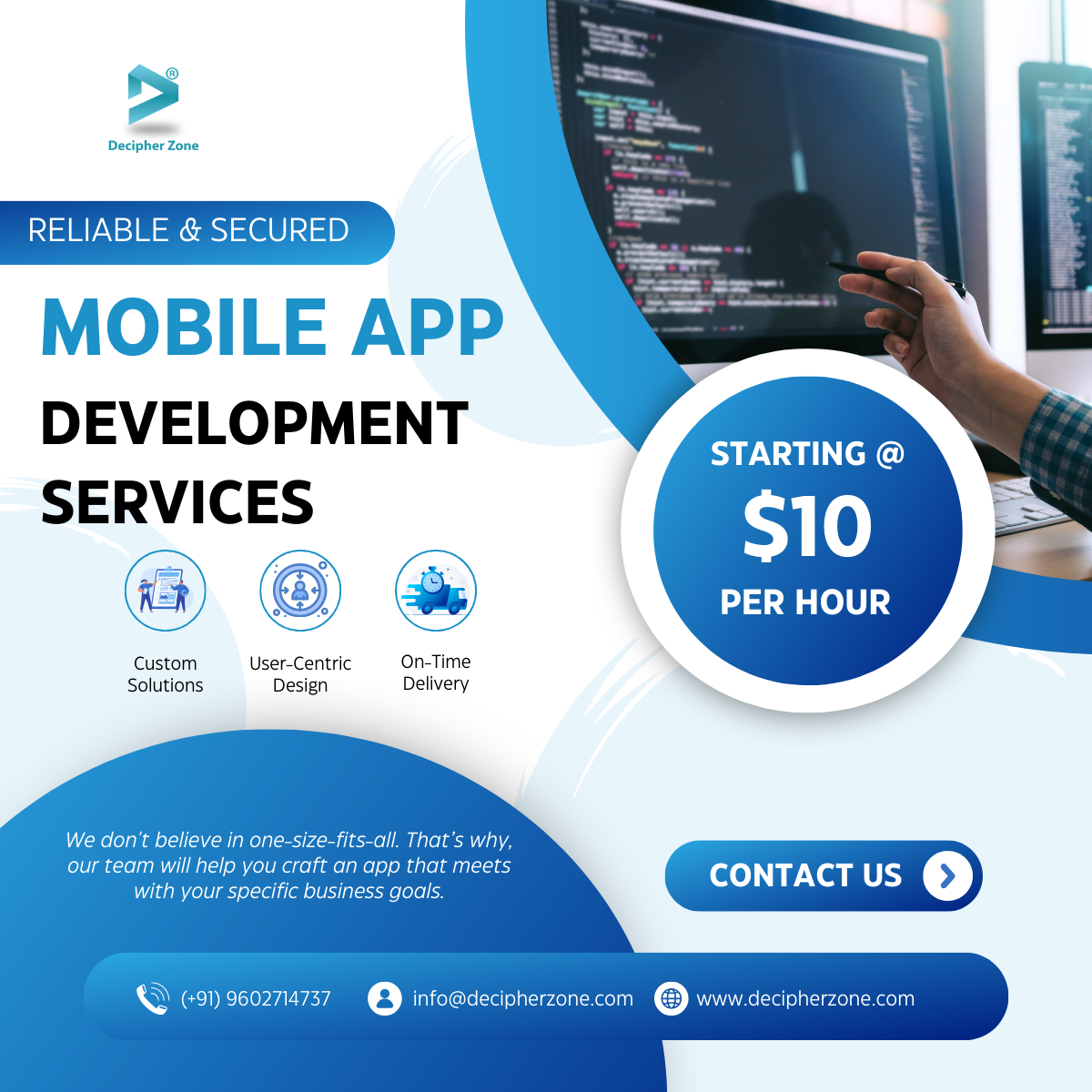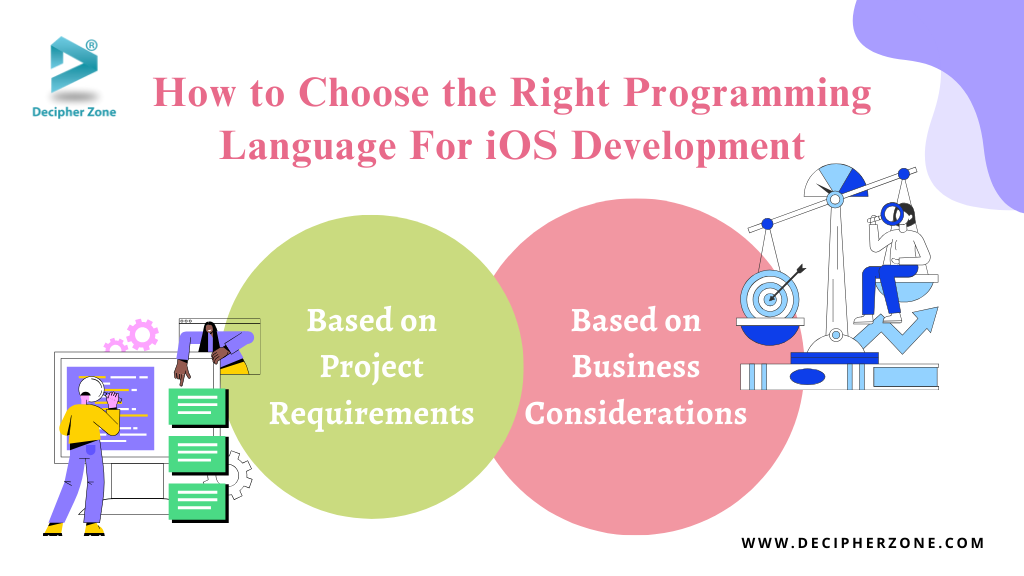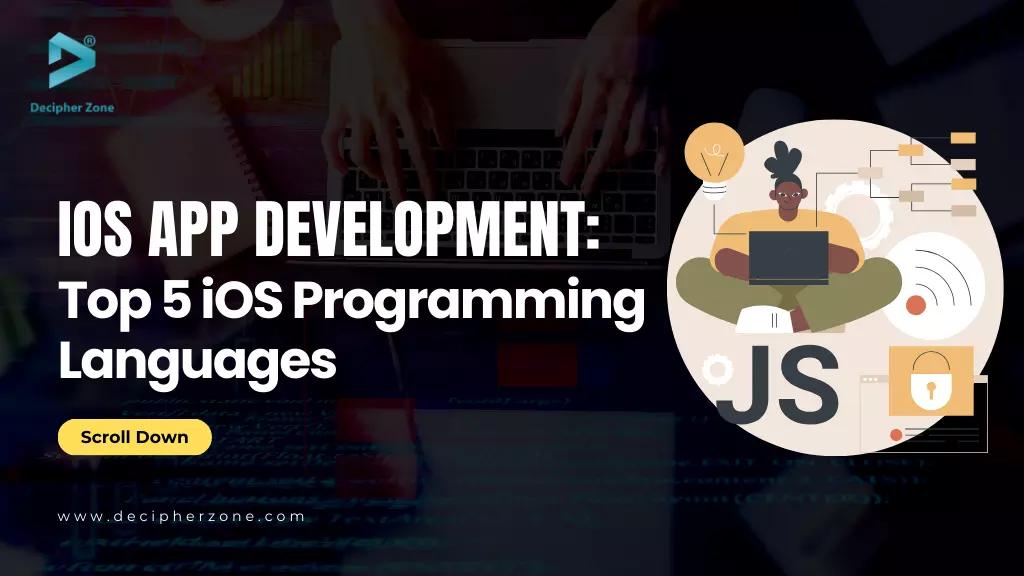Quick summary: iOS development in 2026 is no longer a simple “pick Swift and ship” decision. If you are building iOS-only, Swift with modern Apple tooling gives the best performance and day-one access to platform features. If you need one codebase across iOS and Android (and sometimes desktop or web), .NET MAUI, Flutter, React Native, or Kotlin Multiplatform each make sense in specific scenarios. This guide updates your with 2025–2026 facts, includes a clean separation of languages vs frameworks, and adds a practical decision path for founders and engineering leaders.
The iOS app market is increasing the competitiveness of businesses in choosing programming languages to create user-friendly, high-quality applications. The Apple App Store is currently the largest online store, offering over 2.2 million apps, and the user base is expected to exceed globally by 1 billion as the iOS platform rapidly expands.
Swift, Objective-C, C#, and Dart. If these words look familiar to you and you want to know more, You are on the right page. This blog provides you with detailed information regarding these iOS programming languages.
The expansion results in the huge development of iOS applications offering developers a safe space to demonstrate their software expertise. This raises the question of what the iOS programming language is and how many types are available in the market.
Defining iOS Programming Language
iOS programming language refers to a set of specific languages developers use to build applications for Apple’s operating system. Programming languages allow developers to write code while integrating smoothly with the ecosystem mainly focusing on Apple devices like iPhones, iPads, iWatch, and more.
iOS programming languages provide efficiency and advanced functionality. Among these programming languages, Swift and Objective-C are the most commonly used to create iOS applications. These programming languages allow developers to write larger codebases for better compatibility and continuity in development.
Top 5 Programming Languages for iOS App Development in 2026
So, let’s look into the top best 5 programming languages used by the developers for iOS app development in 2026
-
Swift
-
Objective-C
-
Dart + Flutter
-
JavaScript + React Native
-
Xamarin
-
Kotlin
As you know the variety of programming languages available in the market, iOS developers are restricted to a set of guidelines and language selection to create iOS-oriented applications.
Two quick market facts to frame the conversation:
-
As of 2025, Apple’s App Store hosts about 2.095 million apps. The catalog has stayed relatively stable while Google’s Play Store underwent large purges of low-quality apps, which makes Apple’s more curated ecosystem particularly attractive for premium products.
-
The global iPhone base sits in the ~1.38–1.56 billion active user range depending on the methodology. Use a carefully dated number in pitches to avoid over-claiming and to keep investor decks consistent.
Why “best language for iOS” is the wrong opening question
If you are targeting only iOS and plan to lean into Apple-first capabilities like SwiftData persistence, HealthKit, camera/photography stacks, ProMotion, spatial computing integrations, or the latest SwiftUI APIs, your default choice is Swift.
If you are targeting both iOS and Android (with or without desktop/web), the conversation becomes about trade-offs: code sharing, developer supply, delivery speed, UI fidelity, and long-term maintenance. This article treats the decision as a product strategy choice, not just a syntax preference.
How to choose in 2026: five levers you can explain to stakeholders
-
Platform scope
Are you iOS-only, or do you need iOS + Android (and maybe web/desktop) from day one? Platform count sets the baseline for code sharing and staffing.
-
Team skills and hiring market
What do your developers already know: Swift, C#/.NET, Dart/Flutter, JavaScript/TypeScript, or Kotlin? Hiring into a hot market for Swift or React Native can be very different from hiring for Dart or MAUI in your region.
-
Time to MVP vs long-term fit
Do you need to show investors a polished iOS demo in 6–10 weeks, or do you need a shared codebase that scales to three platforms by Q3?
-
Performance and platform edge
Some features work better with first-party APIs and native UI frameworks. Deep camera work, advanced animations, metal/graphics pipelines, or brand-new iOS APIs usually point to Swift.
-
Total cost of ownership
Maintenance, OS upgrade cycles, dependency health, and framework roadmaps matter more in year two than week two. Be honest about the cost profile.
Languages vs frameworks: stop mixing the layers
To keep things clear, here is the correct taxonomy:
-
Languages: Swift, Objective-C, C#, Dart, JavaScript/TypeScript, Kotlin
-
Frameworks/Toolkits: SwiftUI and SwiftData (Apple), .NET MAUI (C#), Flutter (Dart), React Native (JS/TS), Kotlin Multiplatform or KMP (Kotlin, for shared logic)
Your original draft mixed them (for example, “Dart + Flutter” listed next to languages). The updated sections below fix that and explain when each path shines.
1. Swift
Swift is the most popular language for iOS development and offers an innovative approach. It makes app development easy and creates user interfaces for all Apple platforms with its powerful features. SwiftUI is known as a user interface toolkit. It allows developers to design apps in a simple way. With SwiftUI, developers can create visually appealing and interactive user interfaces for their iOS applications.
This platform offers high-speed and secure software development with a focus on design. Swift is built with security in mind, which helps to prevent various types of unsafe code. The high-speed LLVM compiler technology translates Swift code into machine code, fully leveraging the capabilities of the latest hardware. For reliable support in Swift app development, you can rely on us.
Features
-
Versatile, robust, and user-friendly code,
-
Uses Automatic Reference Computing (ARC) to identify and eliminate instances that are no longer in use,
-
Generics help in identifying programming errors by qualifying the types to be used as parameters.
-
provides a native app experience
-
Easily integrates with Apple's Cocoa and Cocoa Touch frameworks to create feature-rich iOS applications that include databases, interfaces, graphics, and other elements.
2. Objective-C
The main programming language for creating iOS apps is Objective-C, which is a combination of the C language and allows developers to include both C and C++ code. As a result, it is very flexible, strong, and object-oriented.
Objective-C is developed by Objective Computing Corporation, making the design to make programming convenient. It's a versatile programming language that can still be used with Mac OS and iOS, and it served as the main coding language for iOS before Swift was introduced.
Features
-
Enabling you to modify and retrieve objects during runtime adds flexibility to the coding process,
-
Designed to work seamlessly with C and C++, simplifying the creation process of cross-platform applications.
-
Utilizing a high-performance compiler with hardware acceleration support, it outpaces other programming languages in speed.
-
Access to classes and methods that have been abstracted from the programmer's syntax.

3. Dart + Flutter
Using the codebase, developers may create cross-platform apps for iOS, Android, the web, and desktop using Flutter, an open-source UI software development kit (SDK). Because Flutter provides a straightforward experience with quick refresh rates, it is the best framework with Dart as its core language for users to see all recent changes without losing track of important information.
If Dart, released by Google in 2011 paired with the Flutter framework it works as a modern, fast, and flexible language that can be leveraged for building iOS and Android apps.
Features
-
Enabling quick compilation without compromising code quality.
-
Works seamlessly on both iOS and Android devices.
-
It is capable of developing applications quickly due to its ability to render in a way that is consistent for both iOS and Android platforms.
-
Code maintenance is easier to handle as it involves using the same language to develop applications for both platforms.
-
It is based on Google’s Dart programming language, which is a breeze to master and use, which helps make the Python comparison somewhat.
-
Utilizes a quick compiler compatible with hardware acceleration and is much faster than other frameworks for programming.
-
Support C and C++, as it helps C, C++, and Objective-C Programming languages, simplifying the development of cross-platform applications.

4. JavaScript + React Native
The combination of JavaScript and React Native allows for the integration of native code and third-party plugins, offering flexibility and the ability to leverage native device features. Developers can use React Native to create and design iOS apps and also publish their apps on the Android platform. It is a popular choice for building iOS applications due to its simplicity.
By enabling developers to show views on both platforms using JavaScript rather than native C++ and Swift code, React Native streamlines the process and increases accessibility for cross-platform application development. To provide the best possible support while creating React Native applications, trust the experience of experts in the field.
Features
-
Supports auto-layout and flexbox, making the creation of responsive layouts easier.
-
It has various third-party tools that can be used in numerous ways.
-
Using web expertise in HTML, CSS, and JavaScript reduces the entry-level costs associated with mobile development.
-
The declarative syntax makes it manageable for developers to understand and maintain code.
-
Hot Reloading accelerates the development process by providing faster feedback loops which enables developers to iterate quickly.
5. Xamarin
With the help of Xamarin, developers can use the .NET framework to build apps for Windows, iOS, and Android. Developers may build code in the popular C# programming language by using Xamarin. Skilled C# programmers may use the features of the language for quicker development of iOS apps.
Microsoft created C#, which provides strong support for cross-platform compatibility, structured error handling, and object-oriented programming. By doing this, developers can reduce development cycles and exchange code.
Features
-
Provides protection against errors by enabling the structured and rational handling of mistakes.
-
Robust support for object-oriented programming and includes class implementation.
-
Manage low-level memory operations.
-
Utilizes generics, which can adapt to the specific needs of the application.
-
C# seamlessly integrates multiple programming languages into one.
-
While it may not be as quick as some other languages, it benefits from a longer lifecycle due to the support from Microsoft.
6) Kotlin
What it is: KMP lets you share domain logic across Android and iOS while building UIs natively on each platform. It is backed by JetBrains and is officially supported by Google as a way to share code across platforms, with steady tooling improvements.
When to choose it:
-
Your Android team is strong and you want to share core logic with iOS without giving up Swift/SwiftUI on the UI side.
-
You have heavy business rules, networking, and serialization you would rather not write twice.
Strengths:
-
Keeps the iOS UI fully native while consolidating non-UI logic.
-
Growing ecosystem and IDE integration.
Watch-outs:
-
You still need iOS Swift expertise for the UI and platform layer.
-
Project complexity can rise if teams are new to multiplatform modules.
Typical use cases:
-
Fintech, logistics, or domain-heavy apps where rules and models are complex and worth sharing.
-
Organizations that want native quality on iOS but less duplication underneath.
How to Choose the Right Programming Language For iOS Development

So far we have discussed the iOS programming languages. Although using these programming languages there are factors to consider. Choosing the right programming language for developing your iOS app is a challenging task. However, below is a detailed roadmap,
Based on Project Requirements
App Complexity: When it comes to simple apps, Swift's user-friendliness makes it a solid choice. However, for more intricate projects with advanced features, Objective-C's stability and its ability to integrate legacy code could prove beneficial.
Target Users: When considering your app's target audience, it is essential to assess the availability of developers proficient in the specific programming languages required.
Development Team Expertise: Select a language that your team is familiar with to prevent extra training expenses and delays.
Based on Business Considerations
Development Time: Swift's remarkable efficiency streamlines the development process, resulting in significant cost and time savings, and ultimately expedites product launches.
Maintenance Costs: Objective-C projects may require a high level of expertise due to its unique language features. As a result, this specialized requirement could have implications for maintenance costs.
Future Development: Consider the language's future potential and the support it receives from the community if you're planning on future updates and expansion.
Additional Information
Explore Cross-Platform Frameworks: Frameworks like Flutter and React Native allow you to build iOS and Android apps using a single codebase.
Stay Updated: The field of iOS app development company languages constantly evolves. Keep yourself updated on the latest trends and advancements.
Consult with Experts: Seek advice from experienced developers to determine the best language for your specific project.
Bottom Line
With the annual release of iPhones and other Apple products, Apple has significantly advanced technology and provided developers with the opportunity to create powerful and user-friendly apps.
While Swift and Objective-C are the predominant languages for native iOS app development, it's also worth considering C#, JavaScript, and Dart for building native-like apps when used with Flutter, React Native, and Xamarin frameworks.
Understanding the strengths and limitations of each programming language and how they pair with frameworks is crucial for selecting the most suitable one tailored to your specific needs. If you're seeking iOS app development, feel free to get assistance from our prominent developers who have extensive knowledge of iOS programming languages.
FAQs
What language should I use for iOS development?
The world of iOS app development is characterized by a variety of programming languages, including Swift, Objective-C, C#, Dart, and more. The selection of the programming language is based on the preferences of the developer and the unique requirements of the client.
Is Swift similar to Python?
Both Python and Swift are quite easy to learn and have clear syntax. However, they serve different purposes. Python is great for data analysis and machine learning, while Swift is specifically designed for iOS app development.
Which is better, Swift or Flutter?
Swift is considered superior to Flutter due to its specific optimization for the iOS platform, resulting in enhanced performance. On the other hand, Flutter is designed to facilitate cross-platform development, potentially sacrificing some performance optimizations for this versatility.
How to develop a mobile application for iOS using Flutter or React Native?
To launch the design process for an iOS React Native & Flutter mobile application, it is crucial to adhere to specific steps:
1. Begin by conducting thorough market research to understand the current trends and user preferences.
2. Gain a comprehensive understanding of the client's needs and expectations to align the application with their vision.
3. Analyze competitors to identify market gaps and validate the viability of the application idea.
4. Engage in meticulous design and development phases, paying close attention to user interface and experience.
5. Conduct rigorous testing to ensure the application functions seamlessly before launching it on the iOS platform.
Author Profile: Mahipal Nehra is the Marketing Manager at Decipher Zone Technologies, specializing in content strategy, and tech-driven marketing for software development and digital transformation.
Follow us on LinkedIn or explore more insights at Decipher Zone.

